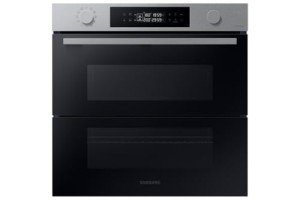Unveiling the World of Built-in Appliances: Enhancing Modern Living
Built-in appliances have actually transformed the method individuals approach home design and efficiency. These necessary parts of contemporary homes not just make the most of area however also develop a seamless aesthetic, making cooking areas and other locations look polished and organized. From ovens that fit snugly within cabinets to refrigerators that mix into the style, built-in appliances provide both practicality and design. This article checks out the different types of built-in appliances, their advantages, design considerations, and answers some regularly asked concerns.
Comprehending Built-In Appliances
Built-in appliances are gadgets created to be integrated into kitchen or home structures perfectly. Unlike freestanding appliances, which can be moved and rearranged, built-in models are typically installed into cabinets or specific built-in areas during brand-new home building or considerable renovations. This enables for a cohesive design, optimizing functionality while enhancing visual appeal.
Types of Built-In Appliances
The most common classifications of built-in appliances consist of:
| Type | Description | Examples |
|---|---|---|
| Cooking Appliances | Include ovens, microwaves, and stovetops that can be built into the cabinetry. | Built-in ovens, microwave drawers, induction cooktops |
| Refrigeration | Appliances that mix into the kitchen while preserving their cooling functions. | Built-in fridges, wine coolers |
| Dishwashing | Dishwashing machines developed to be installed behind kitchen cabinetry doors for a streamlined look. | Integrated dishwashers |
| Laundry | Appliances like washers and dryers developed to fit neatly into utility room. | Built-in washing makers, mix washer-dryer units |
| Other | A category that might include ventilation hoods, coffee machine, and customized appliances. | Built-in coffee devices, warming drawers |
Advantages of Built-In Appliances
1. Space Efficiency
Built-in appliances are created to utilize area more effectively. They can be personalized to fit comfortably within existing kitchen cabinetry or distinct architectural functions of a home.
2. Aesthetic Appeal
The combination of appliances enables homeowners to produce a tidy and cohesive look. The lack of large devices promotes a tidy environment, making spaces, particularly kitchen areas, look more roomy and arranged.
3. Boosted Functionality
Numerous built-in appliances included advanced features, allowing users to optimize their cooking efforts. integrated gas oven and hob packages encourages effective workflow in the kitchen, a vital aspect for cooking enthusiasts.
4. Increased Property Value
High-quality built-in appliances often include considerable value to homes, as they show modern style and functional efficiency. Possible buyers are usually brought in to homes geared up with these updated features.
5. Modification Options
House owners can select from a range of finishes, styles, and technologies, enabling them to personalize their space. Whether choosing stainless steel, panel-ready options, or distinct colors, there is a nearly limitless variety of choices.
Design Considerations for Built-In Appliances
While the integration of built-in appliances can significantly enhance the appearance and function of an area, certain style considerations need to be taken into consideration:
- Measurements: Accurate measurements are essential for making sure an appropriate fit within cabinetry.
- Ventilation: Proper ventilation is necessary for cooking appliances to avoid getting too hot and to keep air quality.
- Power Supply: It's important to guarantee that the required electrical and plumbing facilities remains in place before setting up built-in appliances.
- Accessibility: Design ought to prioritize user ease of access to ensure that utensils, appliances, and work locations are within simple reach.
- Visual Compatibility: All built-in appliances ought to be picked to complement the design style of the home.
Regularly Asked Questions About Built-in Appliances
1. Are built-in appliances more costly than freestanding ones?
Built-in appliances tend to be more expensive due to their customized nature and setup processes. However, the included value and benefits can validate the investment, specifically in premium styles and innovations.
2. Can built-in appliances be moved easily?
No, built-in appliances are typically not created to be moved. They are installed into cabinets, making moving challenging and often requiring substantial effort and remodeling.
3. How do I maintain built-in appliances?
Maintenance depends upon the kind of home appliance. Regular cleaning is suggested in addition to routine look for any service concerns. Constantly refer to the producer's standards for particular maintenance needs.
4. Are built-in appliances energy-efficient?
Lots of built-in appliances are designed to be more energy-efficient than older or freestanding designs, frequently equipped with functions that lessen energy intake.
5. Can I set up built-in appliances myself?
While some property owners might choose to set up appliances themselves, it's often a good idea to work with an expert, specifically for electrical or pipes connections. Proper setup ensures security and optimum performance.
Built-in appliances represent an innovative method to accomplishing a modern, efficient, and visually pleasing home. With many choices available, homeowners can improve both the performance and design of their home. As the need for sophisticated and practical styles continues to rise, the integration of built-in appliances will stay a considerable trend in modern home style. By thinking about the benefits, design needs, and upkeep requirements, individuals can make educated choices about incorporating these streamlined and advanced makers into their homes.

